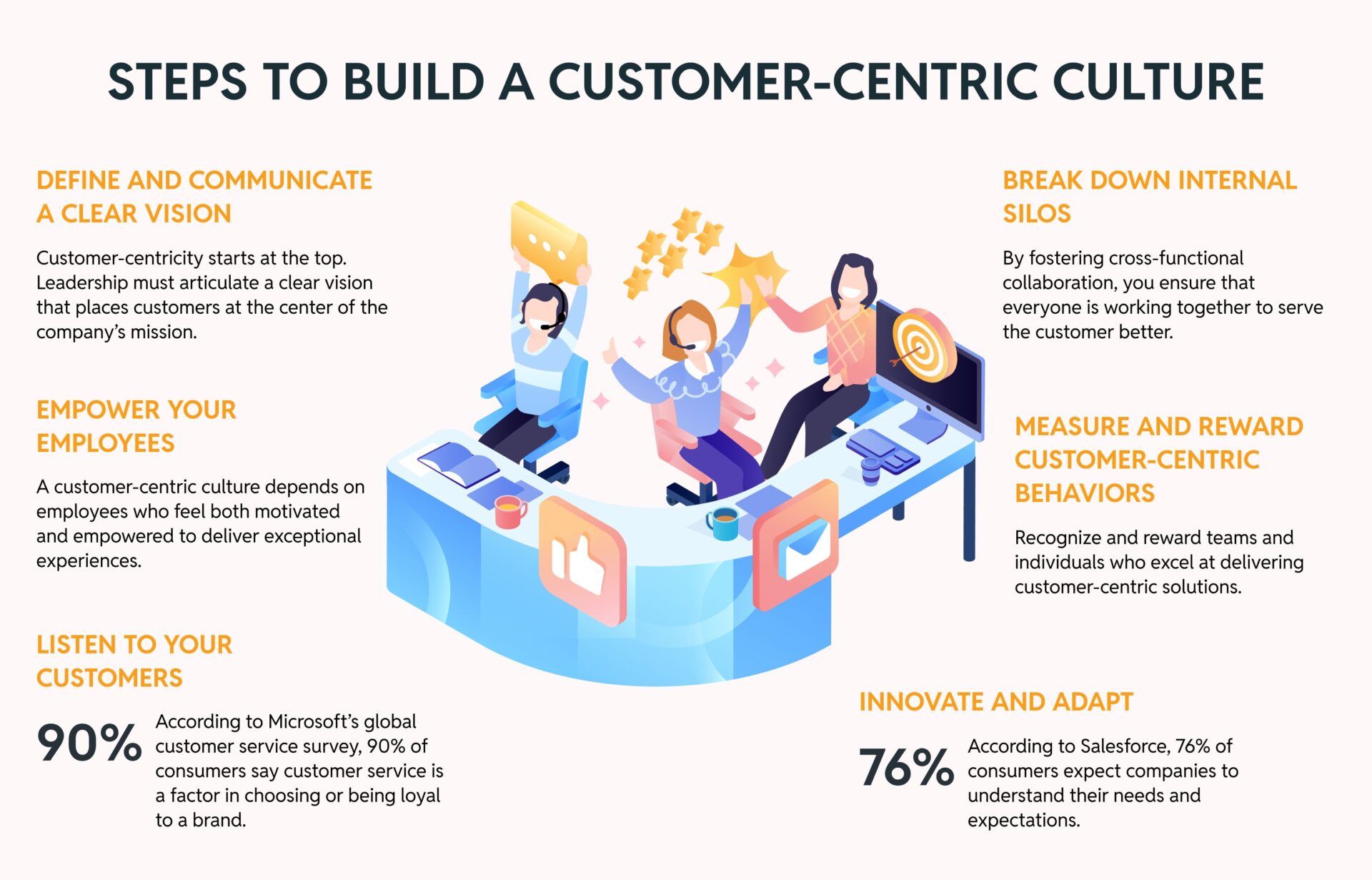In a marketplace defined by fierce competition and ever-rising customer expectations, cultivating a customer-centric culture is no longer optional—it’s a strategic necessity. Businesses that prioritize their customers at every level reap the rewards in the form of increased loyalty, stronger brand advocacy, and sustainable growth. But building such a culture requires more than just good intentions. It calls for clear vision, leadership commitment, and the right tools and processes to put customers at the heart of every decision.
This article explores key steps for fostering a truly customer-centric organization and how XMC360 supports businesses in this transformative journey.
Why Customer-Centricity Matters
Customer-centric organizations consistently outperform their competition. According to Deloitte, customer-centric companies are 60% more profitable than those that are not¹. Moreover, 86% of buyers are willing to pay more for a great customer experience, highlighting the direct connection between customer satisfaction and revenue².
By placing customers first, companies don’t just improve sales; they also build trust, loyalty, and long-term relationships. These benefits extend beyond retention: 74% of consumers say word-of-mouth recommendations influence their purchasing decisions³, meaning a customer-centric culture can also serve as a powerful form of marketing.


Steps to Build a Customer-Centric Culture

1. Define and Communicate a Clear Vision
Customer-centricity starts at the top. Leadership must articulate a clear vision that places customers at the center of the company’s mission. This vision should be communicated consistently and reinforced through tangible actions rather than empty slogans.
XMC360 Connection: XMC360’s analytics dashboards help leaders visualize customer trends and feedback, enabling them to set clear customer-centric goals and track progress against these objectives.

2. Empower Your Employees
A customer-centric culture depends on employees who feel both motivated and empowered to deliver exceptional experiences. Invest in comprehensive training and give teams the authority to resolve issues on the spot. When employees understand their role in creating a positive customer journey, they’re more likely to go above and beyond.
XMC360 Connection: With XMC360’s integrated customer data and AI-driven recommendations, employees have the insights and tools they need to handle inquiries with confidence, ensuring faster, more personalized resolutions.

3. Listen to Your Customers
Actively seek feedback from customers through surveys, social media monitoring, and direct conversations. Listening is key to understanding their needs, pain points, and preferences. According to Microsoft’s global customer service survey, 90% of consumers say customer service is a factor in choosing or being loyal to a brand⁴. Gathering feedback enables continuous improvement and fosters trust by showing that you value customer opinions.
XMC360 Connection: XMC360’s feedback and sentiment analysis tools help businesses identify trends, detect emerging issues, and capture customer insights in real time, ensuring that feedback informs strategic decisions.

4. Break Down Internal Silos
Customer experiences often span multiple departments, from marketing and sales to support and logistics. Siloed teams can lead to inconsistent interactions and delays. By fostering cross-functional collaboration, you ensure that everyone is working together to serve the customer better.
XMC360 Connection: XMC360 unifies customer data across departments, giving every team a single, comprehensive view of the customer’s history and preferences. This alignment drives smoother handoffs and more cohesive experiences.

5. Measure and Reward Customer-Centric Behaviors
What gets measured gets improved. Track key metrics such as Net Promoter Score (NPS), Customer Satisfaction (CSAT), and Customer Effort Score (CES). Recognize and reward teams and individuals who excel at delivering customer-centric solutions. This creates a positive feedback loop, reinforcing behaviors that put the customer first.
XMC360 Connection: With XMC360’s analytics suite, businesses can monitor performance metrics, segment results by team or channel, and identify areas for improvement. This data-driven approach ensures that recognition is fair, meaningful, and impactful.

6. Innovate and Adapt
Customer-centricity isn’t a one-time initiative—it’s an ongoing journey. Stay agile by updating policies, processes, and technologies to match evolving customer expectations. According to Salesforce, 76% of consumers expect companies to understand their needs and expectations⁵. By embracing innovation, you can continuously refine your approach and set new standards for customer service.
XMC360 Connection: XMC360’s scalable platform and AI-driven insights support ongoing innovation, enabling businesses to iterate quickly, adopt new service channels, and implement emerging technologies without compromising the customer experience.

How XMC360 Supports a Customer-Centric Culture
At XMC360, our mission is to help businesses put customers at the heart of their operations. Our unified platform integrates customer data, AI-driven analytics, and omnichannel support solutions, enabling companies to:
- Gain a holistic view of the customer
- Respond quickly and effectively to inquiries
- Personalize interactions at scale
- Continuously track and improve service quality
By leveraging XMC360, businesses can align every function—from frontline support to strategic decision-making—around the customer. This synergy doesn’t just improve outcomes for customers; it also drives long-term growth and profitability.
Building a customer-centric culture is about making the customer’s success your own. It requires vision, empowerment, feedback, collaboration, accountability, and adaptability. As customers become more discerning, the organizations that thrive will be those that truly understand and respond to their needs.
With XMC360, businesses have a trusted partner in their journey toward customer-centricity. By integrating the right tools, processes, and insights, companies can elevate the customer experience, foster loyalty, and stand out in an increasingly crowded marketplace.
References
- Deloitte. (2014). Customer-Centricity: Embedding it into your DNA.
- Walker. (2017). Customers 2020: A Progress Report.
- Nielsen. (2015). Global Trust in Advertising Report.
- Microsoft. (2019). Global State of Customer Service Report.
- Salesforce. (2018). State of the Connected Customer.


